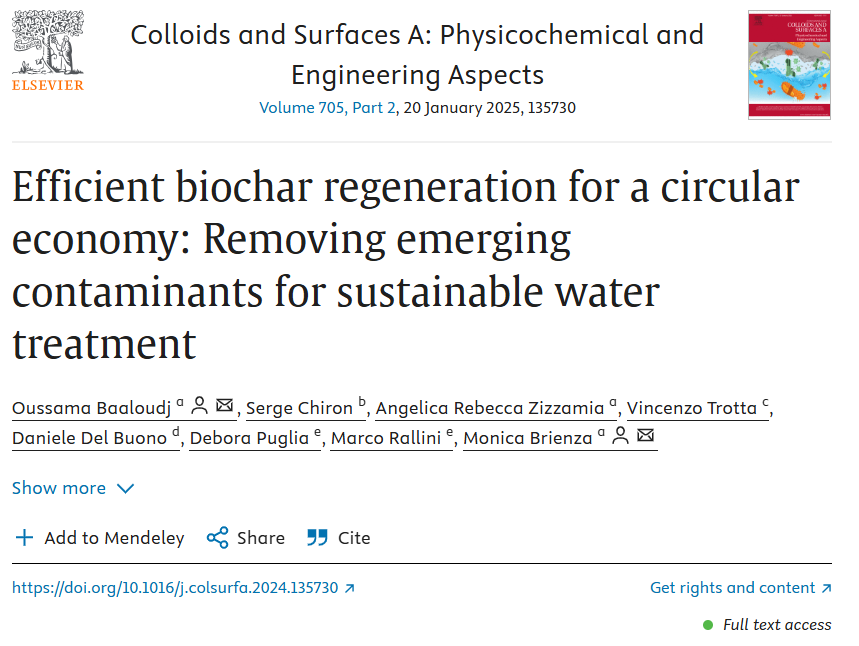
A recent study published in Colloids and Surfaces A: Physicochemical and Engineering Aspects presents new findings on the use and regeneration of biochar derived from forest residues for the removal of emerging contaminants from water systems. Conducted within the framework of the PRIMA-SAFE project, the research focused on four common pollutants: fipronil, venlafaxine, sulfamethoxazole, and trimethoprim. These compounds are frequently found in wastewater and are recognized for their persistence and potential environmental impact.
Key Findings
- Biochar effectively adsorbed all target pollutants, reaching capacities of up to 3.88 mg/g.
- Heat-activated persulfate (PS+T) was the most efficient regeneration method, preserving high adsorption performance over five cycles.
- Post-regeneration analyses confirmed the structural stability and functional integrity of the biochar, supporting its long-term usability.
Implications
This work demonstrates the feasibility of integrating low-cost, renewable biochar into sustainable water treatment practices. Its regeneration via PS+T represents a viable path to reduce waste, extend material lifespan, and contribute to a circular economy approach in environmental remediation.
Reference
Baaloudj O., Chiron S., Zizzamia A.R., Trotta V., Del Buono D., Puglia D., Rallini M., Brienza M. (2025).
Efficient biochar regeneration for a circular economy: Removing emerging contaminants for sustainable water treatment.
Colloids and Surfaces A: Physicochemical and Engineering Aspects.
DOI: 10.1016/j.colsurfa.2024.135730

